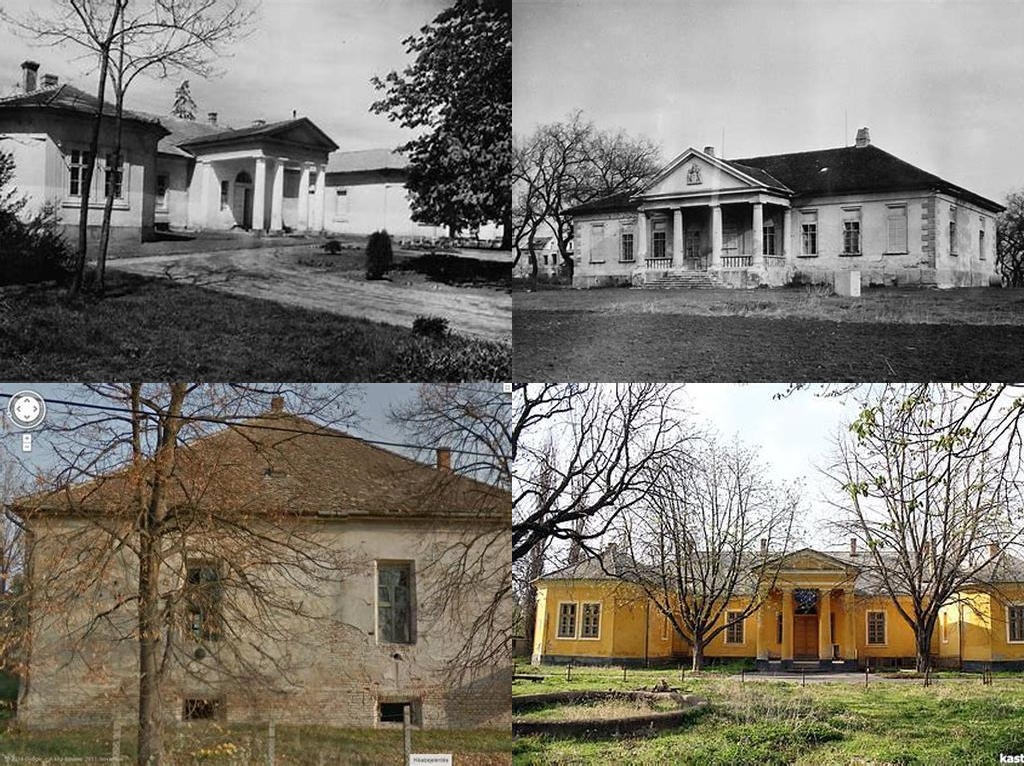
Lavatka-kúria in Abony isn’t the sort of place that’s advertised on city-wide billboards or plastered all over hyperactive travel blogs. And yet, at first sight, you know you’ve found something rare. Hidden in the quiet greenery of Abony, a small town in Hungary’s heartland, it’s a site that feels like it kept its stories for those who linger, who take the time to wander off the obvious road. The building, with its reserved Neoclassical charm and hints of faded grandeur, seems at peace with time’s slow flow. You won’t find crowds queuing at the door, just the old town’s tranquility and, perhaps, a cat drowsing on the cool cobbles.
The mansion’s story begins in the second half of the 19th century, and like so many grand Hungarian houses, it owes its existence to a family seeking both comfort and status. The Lavatka family were not princes or archdukes, but they were important enough in their region to build something lasting – and something beautiful. The mansion itself doesn’t shout for attention, but its elegance is real, from the sweeping, symmetrical façade to the soft stucco work that speaks of an era when style didn’t mean extravagance. Standing in front of the house, you can read these layers of ambition and taste written right into the pale walls.
Despite its somewhat discreet footprint, the house has weathered a surprising stretch of history. Think about it: since the mid-1800s, Lavatka-kúria has seen the rise and fall of empires, two world wars, a socialist regime, and now its transformation in modern-day Hungary. There’s a whiff of nostalgia walking down its hallway, past tall windows and time-worn doors that must have seen their share of secrets and celebrations. Consider the changing hands: after the original family left, the mansion was adapted as a residential building, bearing witness to the changes outside its gates. Yet it remains, stubbornly and quietly, even as other manors in the region have slipped into oblivion or ruin.
Wandering around the grounds, you may notice the unique mix of rural peace and faded cosmopolitan aspiration. The garden—never lavish, but always generous—still hints at the kind of gatherings that might have once happened here. If you stand quietly, you might almost hear the echoes of polite conversations over summer lemonade or the sound of an old piano filtering through the dusk. The lived-in authenticity is, arguably, the kúria’s greatest treasure. Unlike palaces that have become sanitized museum pieces, the Lavatka-kúria feels more like a portal into real, everyday Hungarian history.
Locals will sometimes share stories about the building’s more recent past—how the municipality has, in fits and starts, attempted to keep the mansion cared for. There’s pride, but also a kind of resigned affection, as if everyone knows the house belongs as much to the town as it ever did to the Lavatka family. Some rooms have taken on new lives as venues for intimate events or local exhibitions; occasionally, a cultural event breathes new energy into those old wooden floors. The house adapts, slowly, patiently, surviving not through dramatic restorations but through small acts of care and attention.
For visitors, the real draw is the spirit of place. You won’t find velvet ropes or placards barking at you to keep off the grass. Instead, you find atmosphere: the indelible traces of a Central European past that was complicated, layered, sometimes turbulent, but always rooted in home and land. The mansion itself stands as a counter-narrative to the polished aristocratic palaces elsewhere, presenting instead a glimpse into the daily rhythms and aspirations of a Hungarian family that valued continuity as much as conquest.
To pass an afternoon at the Lavatka-kúria is to move through a chapter of Abony’s history that isn’t over yet. The tree-shaded lanes, the subtle architectural flourishes, the ghosts of former residents all invite you to imagine, to fill in the silence with your own questions and footsteps. If you’re the sort of traveler who prefers to listen and observe, to discover detail rather than spectacle, then this is exactly the place you should take the detour for. Sometimes, the quietest houses speak the loudest across time.





